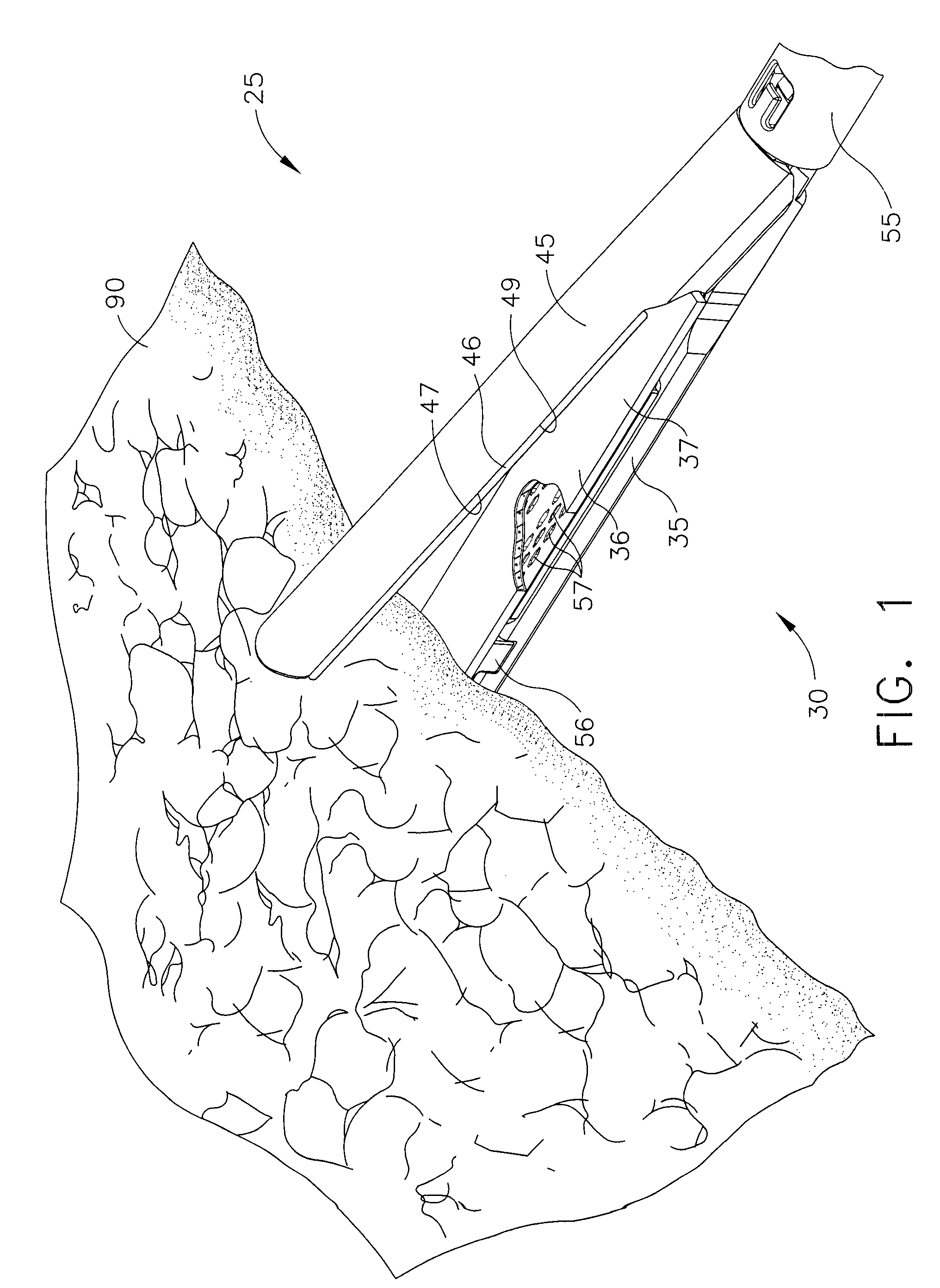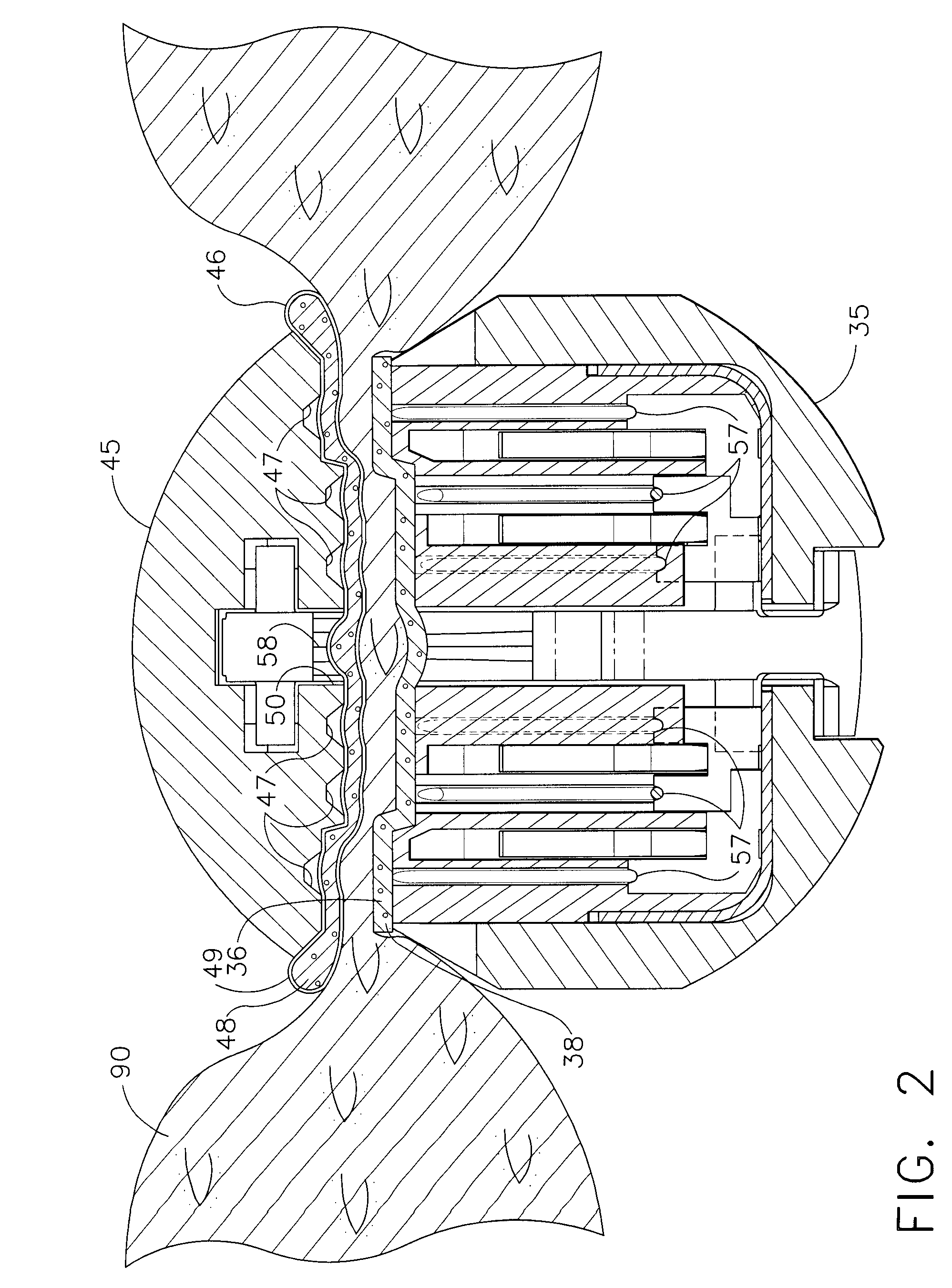Surgical fastening device with initiator impregnation of a matrix or buttress to improve adhesive application
a technology of tissue and adhesive, which is applied in the direction of surgical staples, paper/cardboard containers, manufacturing tools, etc., can solve the problems of high force loads and the patient will “overload” the new pouch
- Summary
- Abstract
- Description
- Claims
- Application Information
AI Technical Summary
Benefits of technology
Problems solved by technology
Method used
Image
Examples
first alternate embodiment
[0046]FIG. 4 shows an alternate embodiment of a surgical device 125 that is the above described endocutter that was combined with two releasable portions of an initiator material 136 that contain an adhesive initiator 38. In FIG. 4, the two releasable portions of initiator material 136 are shown stapled on lung tissue after the tissue is clamped, stapled, and cut between the first and second clamping members 35,45 of the surgical device 125. The clamping and stapling and cutting process has stapled, cut, and released the two releasable portions of material 136 containing an adhesive initiator 38 onto the tissue 90. The releasable portions of initiator material 136 are buttress material and may prevent staple tear out in the thin frangible lung tissue.
[0047]Lung tissue comprises thin air sacs or bladders in combination with vascular structures to ensure the oxygenation of blood. As a consequence, severing or cutting lung tissue can include small bleeders and / or air leaks. In FIG. 4, ...
second alternate embodiment
[0048]FIG. 5 shows an alternate method of securing tissue with a stapling device, a single portion of initiator material 136, and the adhesive 48. As shown, a portion of initiator material 136 is placed between to tissue portions 177 and the tissue and initiator material 136 is clamped, stapled, and cut. A pair of cut edges 176 of the tissue 177 can then be coated with adhesive 48 from the adhesive applicator 120 (see FIG. 4), and the contact of the adhesive 48 with the adhesive initiator 38 in the initiator material 136 has polymerized or set the adhesive 48 into the set adhesive 48a shown. The single portion of material 136 can be a matrix, a mesh, or a foam buttress. A foam buttress material that can be compressed by clamping and stapling between irregular tissue materials and can expand to fill gaps between irregular tissue surfaces. This method of securing tissue can be used with the endocutter described above or with a circular stapler described below.
Circular Stapler with Dua...
PUM
| Property | Measurement | Unit |
|---|---|---|
| biocompatible | aaaaa | aaaaa |
| adhesive | aaaaa | aaaaa |
| time | aaaaa | aaaaa |
Abstract
Description
Claims
Application Information
 Login to View More
Login to View More - R&D
- Intellectual Property
- Life Sciences
- Materials
- Tech Scout
- Unparalleled Data Quality
- Higher Quality Content
- 60% Fewer Hallucinations
Browse by: Latest US Patents, China's latest patents, Technical Efficacy Thesaurus, Application Domain, Technology Topic, Popular Technical Reports.
© 2025 PatSnap. All rights reserved.Legal|Privacy policy|Modern Slavery Act Transparency Statement|Sitemap|About US| Contact US: help@patsnap.com



